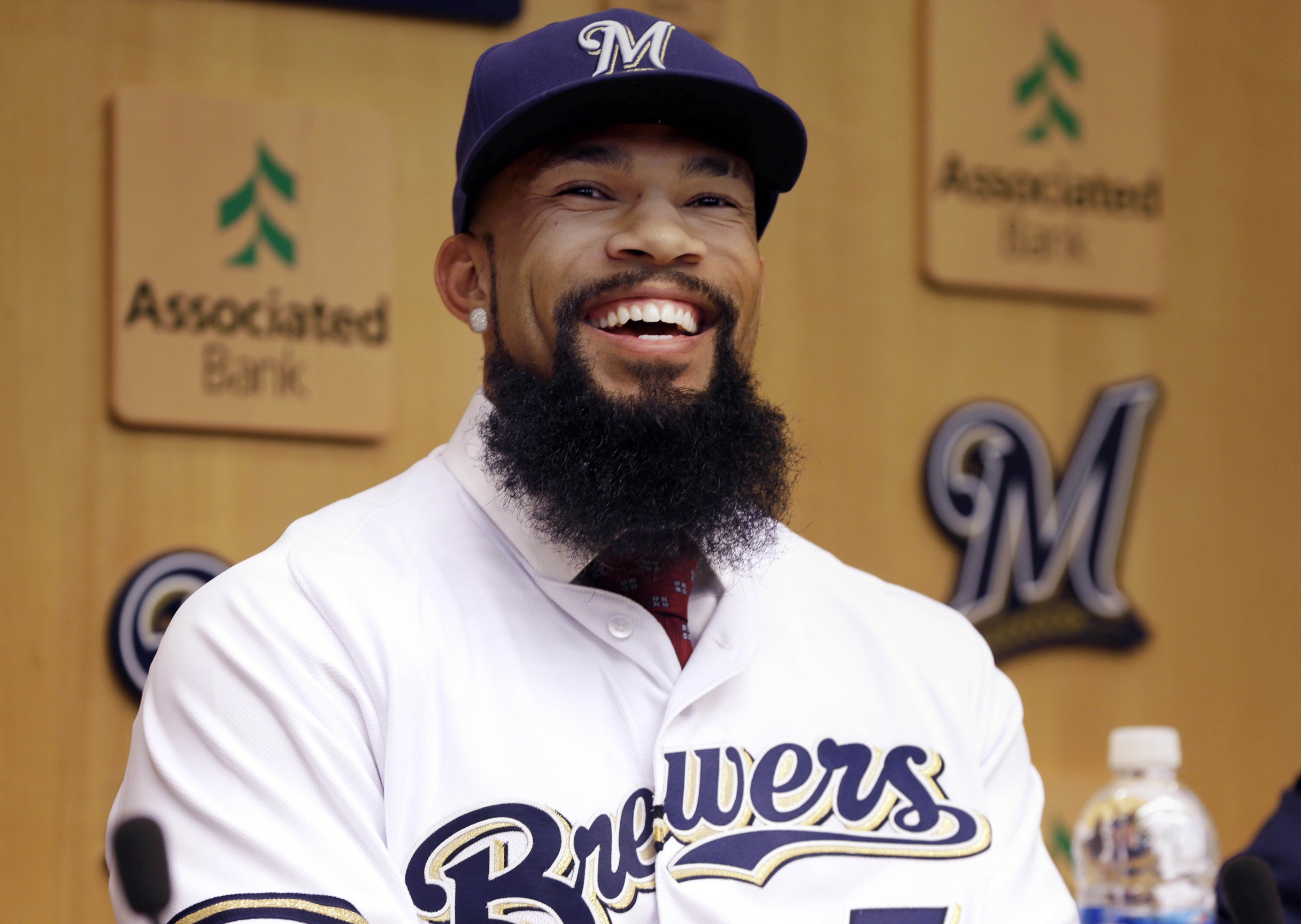I have spent nearly all of David Stearns’ tenure as Brewers’ GM praising basically everything he has done. Even the moves that have not worked out have been logical and defensible, such as the signings last offseason of Will Middlebrooks and Garin Cecchini. But I am having a hard time understanding what exactly the thought process was over the last two weeks, when the Brewers claimed and then waived Adam Walker, signed Eric Thames, and designated Chris Carter for assignment.
The organization was in an interesting position with Carter this offseason; the slugging first baseman led the league in home runs but was otherwise not very good, but the club didn’t have a clear replacement for him. Carter was once a highly-touted prospect, but he is about to turn 30, has now had four full seasons in the big leagues, and has been worth more than 1.0 WARP just once in his career. The chances that he actually developed into a quality big leaguer were relatively low, but I thought the Brewers might hold onto him simply because there wasn’t a clear alternative at first base and he was a cost-controlled option for the next couple years.
With that information in hand, the fact that the Brewers have essentially swapped him for Eric Thames is not that surprising. But the path that the club took to get there is perplexing, and it reveals a weird lack of foresight.
Just before the deadline to finalize the 40-man roster, the Brewers claimed Adam Walker off of waivers from Milwaukee. Walker has a similar profile to Carter, as he is a first-base type with big power but lots of swing-and-miss in his game. He was added to the 40-man roster, protecting him from the Rule 5 draft at the expense of other, more viable options such as Wei-Chung Wang. Then, though, he was designated for assignment after the Brewers claimed reliever Steve Geltz.
Thames, who the Brewers signed this week, is a question mark who is returning to the big leagues from Korea. He put up impressive power and patience numbers in the KBO, but it is hard to know how well those numbers will translate back to MLB. When Thames was in the big leagues in 2011 and 2012, he was a high-power, high-strikeout corner outfielder.
The takeaway from this series of moves is that the Brewers clearly don’t want to waste more than one roster spot on this type of all-bat, no glove player. The club DFA’d Walker shortly after signing him, so they clearly were not enamored with him specifically. They then DFA’d Carter and signed Thames, so the only one currently left on the Brewers’ 40-man roster is Thames.
What is weird about this is why the club cares about having this particular archetype on its roster at all. The swapping out of Carter and Walker for Thames indicates that the club is interested in versatility, because Thames can also play the outfield occasionally. Versatility has been a theme though for the Stearns front office, though, so it isn’t as if this is a newfound desire that the organization just realized it wanted to emphasize in the last few days.
40-man roster spots are valuable. The Brewers seem committed to reserving one for a slugging first baseman, which is a surprisingly rigid approach for a team that has been quite flexible over the past year-plus. Instead, the Brewers chose not to protect someone from within the organization.
Importantly, the end result makes sense. The Brewers will go into the season with Eric Thames as the only one of these three players on their 40-man, which is a logical outcome. Most likely, Wang (or whichever organizational player would have been the 40th man on the roster) will never amount to anything in the big leagues, and Steve Geltz may or may not ever pitch for the Brewers. But this was a weird few days for that roster spot, as the Brewers specifically chose to select someone who they then released a week later.

I understand Thames won the gold glove in Korea at first base and also stole 40 bases in a season. So he’s not that one-dimensional.
They have a tiny payroll and need to stockpile players so they should’ve kept both. I don’t even care if they played Thames in CF and he made 1000 errors. 1000. It doesn’t make sense to cut anyone loose for nothing if they’re committed to a rebuild. Just get as many players as you can and throw them out there, then trade the ones who won’t be around in 3 years. Aren’t they trying to lose 162 games anyway?